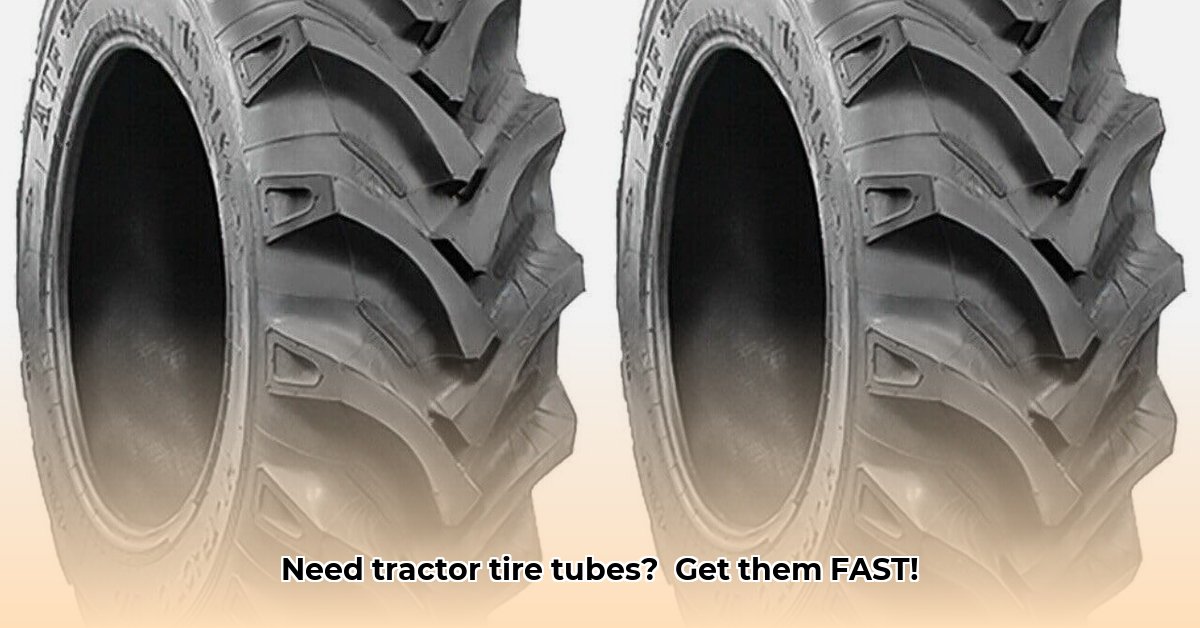
Downtime on a farm is costly, and a flat tractor tire can bring operations to a standstill. Choosing the right 13.6-28 (and 14.9-28) tractor tire tube is crucial for minimizing disruptions and maximizing efficiency. This comprehensive guide explores the market, technical specifications, and actionable strategies for farmers, retailers, and manufacturers. For more detailed specifications, check out this helpful resource: 13.6-28 tire data.
Understanding the 13.6-28 and 14.9-28 Tractor Tire Tube Market
The 13.6-28 and 14.9-28 tire sizes are prevalent in agricultural applications. Farmers often utilize both single and dual-tube setups; the latter provides immediate redundancy, reducing downtime significantly. A quick swap with a spare tube can save hours of lost productivity. The standard valve type is the TR218A, ensuring compatibility across various brands and inflation systems. However, detailed information regarding tube construction and materials—crucial for determining durability and longevity—is often scarce, making direct comparisons challenging. This lack of transparency highlights a need for improved industry standards.
Market Analysis: Price, Availability, and Variations
The market offers a range of tubes, creating a need for careful evaluation beyond simple price comparisons. Availability varies based on location and supplier, emphasizing the need for securing reliable sourcing to minimize delays during emergencies. While single tubes are an economical option for basic needs, the added cost of dual-tube sets offers substantial returns in reduced downtime, making it a worthwhile investment for many farms. The absence of consistent data on features such as burst pressure across manufacturers poses a challenge for informed decision-making. Further research into independent testing data is needed to fill this gap and equip farmers with clearer insights.
Deep Dive into Technical Specifications: Material, Construction, and Performance
The performance of a 13.6-28 tractor tire tube depends heavily on its materials and construction.
Material Selection: The Importance of Butyl Rubber
High-quality butyl rubber is the cornerstone of a durable tube. Its superior air retention and puncture resistance are paramount for minimizing downtime. Lower-quality materials may offer a lower initial cost, but the increased risk of failures quickly negates any savings. When choosing a tube, always prioritize butyl rubber composition for prolonged use and reliability. The rubber's thickness is also a crucial factor affecting its durability and ability to withstand pressure. This information, however, is often not clearly provided by manufacturers.
Construction and Manufacturing: Ensuring Robustness
The manufacturing process significantly impacts the tube's strength and resilience to uneven pressure. A well-constructed tube will be less prone to splitting or bursting under stress. While specific manufacturing details may be proprietary, identifying reputable brands with a history of reliable products is a practical strategy for farmers seeking dependable tubes. Does the manufacturer’s reputation support the tube’s claimed durability?
Performance Characteristics: Burst Pressure and Durability
The burst pressure—the maximum pressure the tube can handle before failure—is a vital safety specification. This pressure should substantially exceed the tire's recommended operating pressure, providing a safety margin against unexpected bursts. Unfortunately, manufacturers rarely provide this crucial information openly. Obtaining detailed performance data through independent testing or industry benchmarking would significantly improve the reliability of purchasing decisions. Isn't knowing the burst pressure essential for safe operation?
Actionable Insights for Stakeholders
Choosing the right tube is about more than just a price tag. It’s about minimizing costly downtime.
For Farmers: Strategies for Minimizing Downtime
- Prioritize Redundancy: Invest in dual-tube sets to drastically reduce downtime caused by flats. This is a low-cost insurance policy against significant productivity losses. How much time (and money) could dual tubes save you annually?
- Regular Inspection: Regularly inspect your tubes for wear and tear, especially after operating in challenging terrains. Early detection of minor imperfections can prevent costly major repairs.
- Supplier Reliability: Partner with a supplier known for speedy delivery and customer support. A quick turnaround time minimizes disruptions to your operations. What’s your downtime cost per hour?
- Proactive Maintenance: Preventative maintenance is cheaper than unexpected repairs. Regularly inspect tires and tubes to catch and address small problems before they escalate.
For Retailers: Optimizing Inventory and Product Offerings
- Offer Variety: Provide both single and dual-tube options to cater to different farmer needs and budgets.
- Transparency: Clearly showcase product specifications, including (where available) burst pressure, material composition, and warranty details.
- Supplier Partnerships: Collaborate with reliable suppliers to ensure quick order fulfillment and product quality.
- Bundled Services: Consider offering installation or other services alongside tubes to enhance customer value and streamline the purchasing process.
For Manufacturers: Improving Product Offerings and Transparency
- Invest in R&D: Develop more durable and puncture-resistant tubes through improvements in materials and manufacturing processes.
- Benchmarking: Engage in independent testing to obtain and publicly share crucial performance data, such as burst pressure and material resilience.
- Detailed Specifications: Provide complete and transparent product specifications, including material composition and construction details.
- Premium Options: Develop and offer premium tube options with enhanced features to cater to high-demand agricultural applications.
Conclusion: The Unsung Heroes of Farm Efficiency
13.6-28 and 14.9-28 tractor tire tubes are unsung heroes in ensuring smooth farm operations. By prioritizing quality materials, robust construction, redundant systems, and reliable suppliers, farmers can significantly reduce downtime and maximize productivity. The lack of readily available detailed specifications highlights a need for greater transparency within the industry, empowering farmers to make informed decisions and invest wisely in these essential components. The focus should be less on the initial price and more on the long-term value and reliability they contribute to the agricultural operation's overall efficiency and profitability.